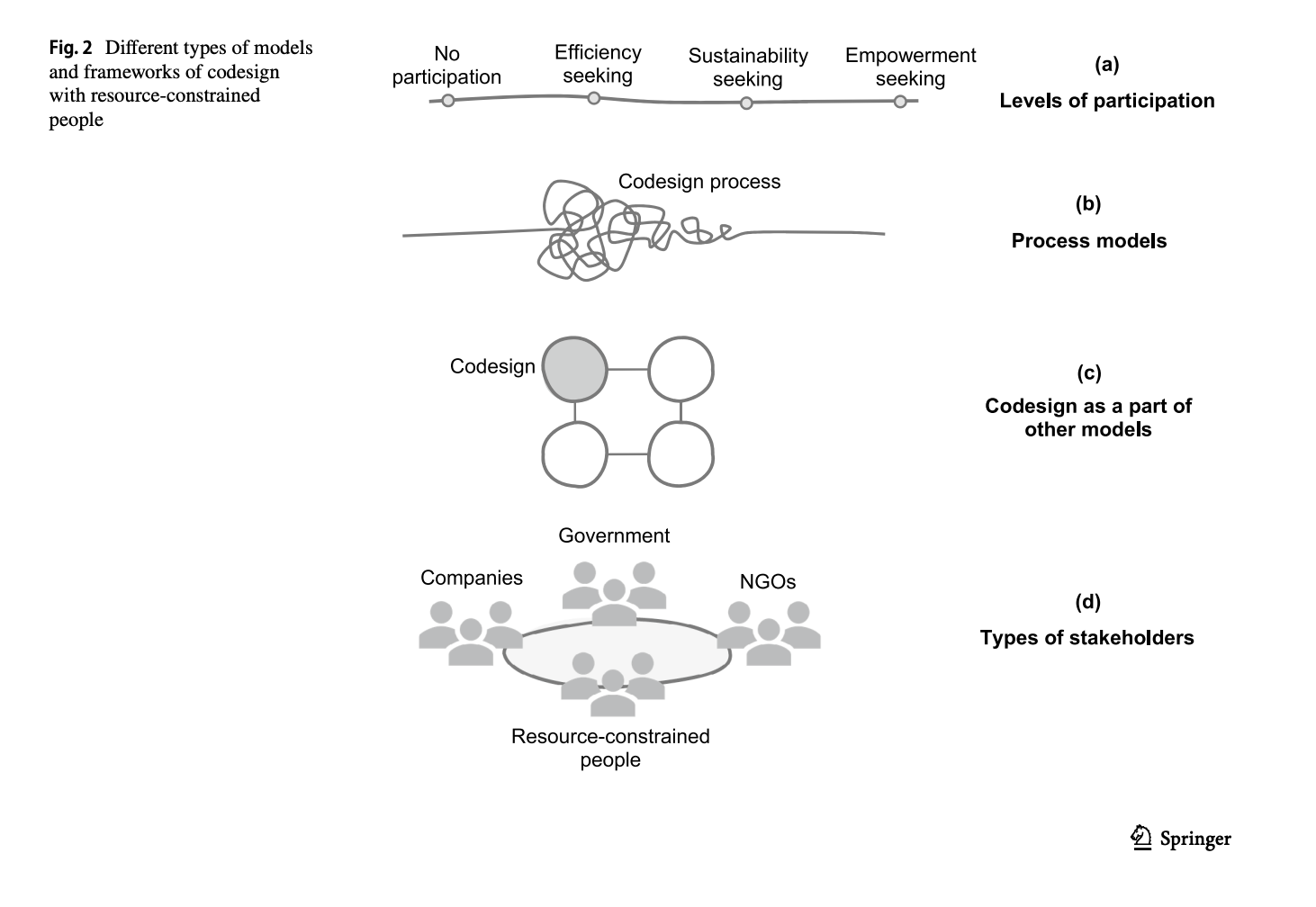
Codesign in resource-limited societies: theoretical perspectives, inputs, outputs and influencing factors
- Post by: Tobias Larsson
- 17th February 2022
- No Comment
Abstract
Codesign with resource-constrained people living in developing countries is crucial for sustained adoption and use of designed solutions. Several studies have investigated codesign with resource-constrained people. It is, therefore, important to understand what has been investigated and learnt so far as well as to plan for further scholarly exploration of this field. To address this, I applied a systematic literature review (SLR) approach to understand main sources, definitions, and theoretical perspectives regarding codesign with resource-constrained people. The SLR also aimed to understand inputs and outputs of codesign as well as factors influencing the codesign process. The findings portray a multifaceted picture regarding these aspects of codesign. I discuss implications of review findings for the practice of codesigning solutions with resource-constrained people, identify concerns that researchers should have about this field, and offer suggestions for future research in this field of codesign
Keywords
Design process, Cocreation, Participatory design, Developing countries, Low resource settings, Frugal innovation, DEVELOPING-COUNTRIES, CO-CREATION, POOR PEOPLE, HEALTH-CARE, INNOVATION, BASE, MANAGEMENT, POVERTY, BOTTOM
Citation
Jagtap, S. Codesign in resource-limited societies: theoretical perspectives, inputs, outputs and influencing factors. Res Eng Design (2022). https://doi.org/10.1007/s00163-022-00384-1
